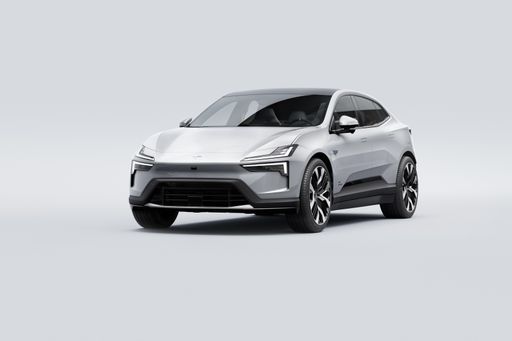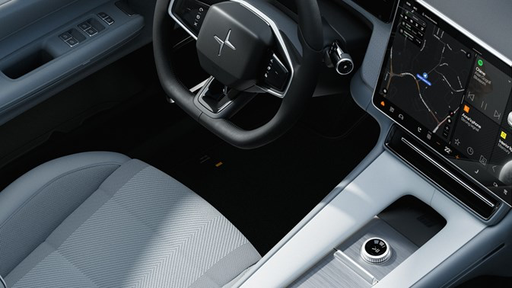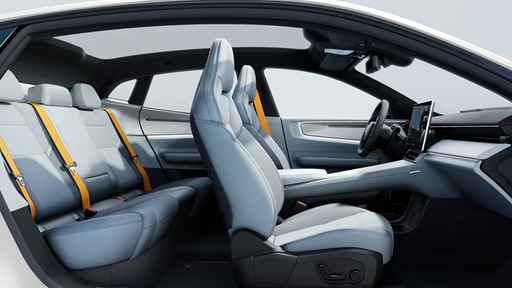Polestar 4 vs ZEEKR 7X - Unterschiede & Preise im Vergleich
Kosten und Verbrauch:
Preis und Effizienz gehören zu den wichtigsten Kriterien beim Autokauf – und genau hier trennt sich häufig die Spreu vom Weizen.
ZEEKR 7X ist beim Preis ein Stück weit im Vorteil – er startet bereits ab 53000 €, während der Polestar 4 mit 61900 € etwas teurer ist. Das entspricht einem Preisunterschied von rund 8910 €.
Beim Stromverbrauch liegt der Vorteil beim ZEEKR 7X: Mit 17.70 kWh pro 100 km ist er kaum spürbar effizienter als der Polestar 4 mit 17.80 kWh. Das sind rund 0.10 kWh Unterschied.
In Sachen Reichweite kann der Polestar 4 kaum spürbar mehr überzeugen: Er schafft bis zu 620 km, also etwa 5 km mehr als der ZEEKR 7X.
Motor und Leistung:
Unter der Haube zeigt sich, welches Modell sportlicher ausgelegt ist und wer beim Duell die Nase vorn hat.
Bei der Motorleistung hat der ZEEKR 7X ein Stück weit einen Vorteil – mit 646 PS statt 544 PS. Das entspricht einem Leistungsplus von rund 102 PS.
In der Beschleunigung von 0 auf 100 km/h hat der die Nase vorn – er schafft den Sprint in , während der benötigt. Damit ist er rund schneller.
Bei der Höchstgeschwindigkeit liegt der ZEEKR 7X nur leicht vorn – er erreicht 210 km/h, während der Polestar 4 bei 200 km/h endet. Der Unterschied beträgt etwa 10 km/h.
Auch beim Drehmoment zeigt sich ein Unterschied: ZEEKR 7X zieht nur leicht kräftiger durch und bietet 710 Nm statt 686 Nm. Das macht rund 24 Nm Unterschied.
Platz und Alltagstauglichkeit:
Ob Familienauto oder Alltagsbegleiter – wer bietet mehr Platz, mehr Flexibilität und mehr Komfort?
Sitzplätze: bietet mehr Sitzmöglichkeiten – vs .
Beim Leergewicht zeigt sich Polestar 4 minimal leichter – 2230 kg im Vergleich zu 2395 kg. Der Gewichtsunterschied liegt bei rund 165 kg.
Beim Kofferraumvolumen hat der ZEEKR 7X kaum spürbar mehr Platz – 539 L gegenüber 526 L. Das sind rund 13 L Unterschied.
Auch bei der Zuladung hat ZEEKR 7X kaum spürbar das Rennen gewonnen – 485 kg gegenüber 455 kg. Das ergibt einen Unterschied von rund 30 kg.
Wer gewinnt das Rennen?
Der ZEEKR 7X gewinnt mit einem runderen Gesamtpaket und ist somit unser DriveDuel Champion!
ZEEKR 7X ist der bessere Allrounder in diesem Vergleich.

ZEEKR 7X
Kosten und Verbrauch
Detailauswertung ansehen
Motor und Leistung
Detailauswertung ansehen
Maße und Karosserie
Detailauswertung ansehen
Polestar 4
Der Polestar 4 setzt das skandinavische Designkonzept in ein schlankes Coupé-SUV um und wirkt dabei wie ein moderner Kunstgegenstand auf Rädern — minimalistisch, hochwertig und kompromisslos elektrisch. Er fährt sich überraschend lebhaft, verwöhnt mit einer klaren, digitalen Innenwelt und fühlt sich wie ein Premium-Alltagsbegleiter, der gleichzeitig ein bisschen Rampenlicht liebt.
Details @ Polestar Automotive Holding
@ Polestar Automotive Holding
 @ Polestar Automotive Holding
@ Polestar Automotive Holding
 @ Polestar Automotive Holding
@ Polestar Automotive Holding
ZEEKR 7X
Der Zeekr 7X wirkt wie ein eleganter Allrounder, der moderne Elektro-Ästhetik mit praktischer Alltagstauglichkeit verbindet. Mit reichlich Komfort, klarer digitaler Bedienung und einem Fahrgefühl, das Laune macht, ist er eine überzeugende Wahl für Käufer, die weder auf Stil noch auf Nutzwert verzichten möchten.
Details
 @ Polestar Automotive Holding
@ Polestar Automotive Holding
|
|
|
|
|
Kosten und Verbrauch |
|
|---|---|
|
Preis
61900 - 69900 €
|
Preis
53000 - 63000 €
|
|
Verbrauch L/100km
-
|
Verbrauch L/100km
-
|
|
Verbrauch kWh/100km
17.8 - 18.7 kWh
|
Verbrauch kWh/100km
17.7 - 19.9 kWh
|
|
Elektrische Reichweite
590 - 620 km
|
Elektrische Reichweite
480 - 615 km
|
|
Batteriekapazität
94 kWh
|
Batteriekapazität
-
|
|
co2
0 g/km
|
co2
0 g/km
|
|
Tankgröße
-
|
Tankgröße
-
|
Maße und Karosserie |
|
|---|---|
|
Karosserie
SUV
|
Karosserie
SUV
|
|
Sitze
5
|
Sitze
5
|
|
Türen
5
|
Türen
5
|
|
Leergewicht
2230 - 2355 kg
|
Leergewicht
2395 - 2535 kg
|
|
Kofferraum
526 L
|
Kofferraum
539 L
|
|
Länge
4840 mm
|
Länge
4787 mm
|
|
Breite
2008 mm
|
Breite
1930 mm
|
|
Höhe
1534 mm
|
Höhe
1650 mm
|
|
Kofferraum maximal
1536 L
|
Kofferraum maximal
-
|
|
Zuladung
455 kg
|
Zuladung
455 - 485 kg
|
Motor und Leistung |
|
|---|---|
|
Motorart
Elektro
|
Motorart
Elektro
|
|
Getriebe
Automatik
|
Getriebe
Automatik
|
|
Getriebe Detail
Reduktionsgetriebe
|
Getriebe Detail
Reduktionsgetriebe
|
|
Antriebsart
Allrad, Heckantrieb
|
Antriebsart
Heckantrieb, Allrad
|
|
Leistung PS
272 - 544 PS
|
Leistung PS
421 - 646 PS
|
|
Beschleunigung 0-100km/h
3.8 - 7.1 s
|
Beschleunigung 0-100km/h
3.8 - 6 s
|
|
max. Geschwindigkeit
200 km/h
|
max. Geschwindigkeit
210 km/h
|
|
Drehmoment
343 - 686 Nm
|
Drehmoment
440 - 710 Nm
|
|
Anzahl Zylinder
-
|
Anzahl Zylinder
-
|
|
Leistung kW
200 - 400 kW
|
Leistung kW
310 - 475 kW
|
|
Hubraum
-
|
Hubraum
-
|
Allgemein |
|
|---|---|
|
Modelljahr
2024
|
Modelljahr
2025
|
|
CO2-Effizienzklasse
A
|
CO2-Effizienzklasse
A
|
|
Marke
Polestar
|
Marke
ZEEKR
|
Gibt es den Polestar 4 mit verschiedenen Antrieben?
Angeboten wird der Polestar 4 mit Allrad oder Heckantrieb.
Die angezeigten Preise und Daten sind Schätzungen, die auf deutschen Listenpreisen basieren, und können je nach Land variieren. Diese Informationen sind rechtlich nicht bindend.
